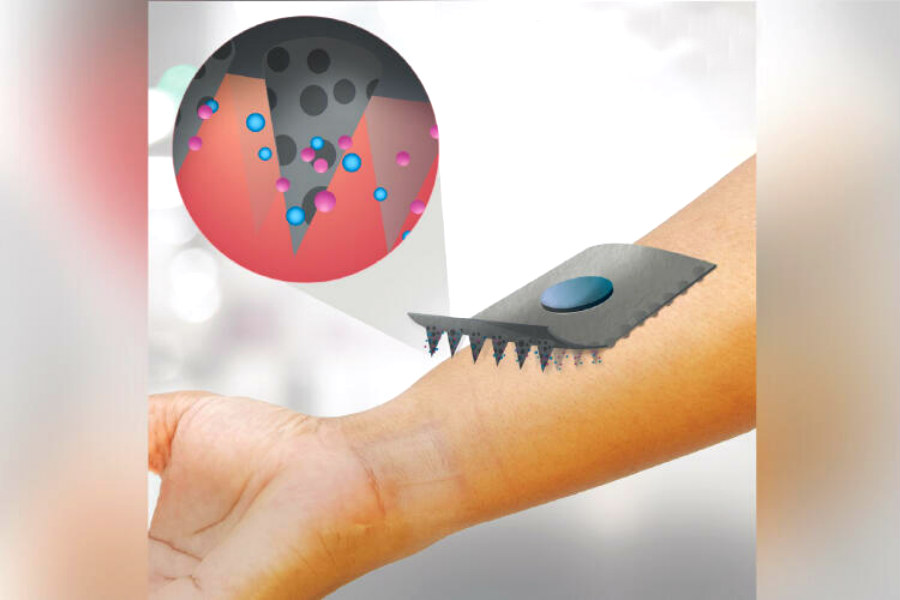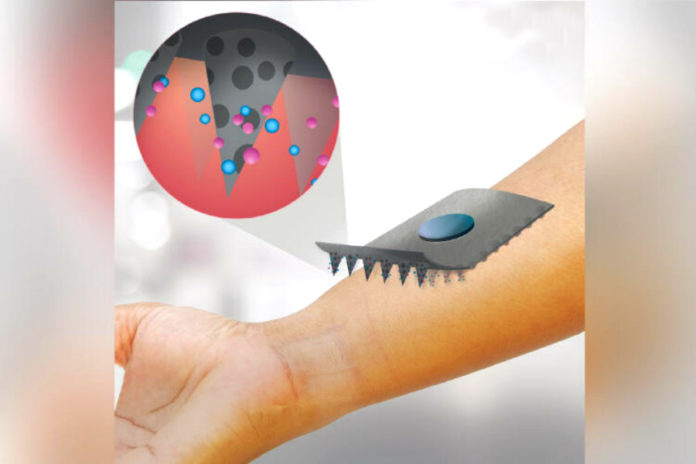
Credit: University of Tokyo
A team of scientists from the University of Tokyo has developed a biodegradable paper patch that has microneedles to painlessly diagnose abnormal blood glucose levels in conditions such as prediabetes.
From nicotine patches to birth control patches, the clinical demand for easy to use patches is skyrocketing. Patches with microneedles that can work efficiently while causing no pain to the bearer are something scientists around the world tried to achieve for some time now.
How does this work?
Microneedles are small needles less than 1mm in size. In their study, although microneedles puncture the skin, it is so shallow that it will not reach any nerves. This is why this microneedle patch would not cause any discomfort or pain.
These microneedles do not extract blood but instead, it draws the fluid from the skin which is abundant with special biomarkers that tell the story. The main issue researchers faced here was to develop the perfect microneedle that could also analyse the fluid faster. “We have overcome this problem by developing a way to combine porous microneedles with paper-based sensors. The result is low-cost, disposable, and does not require any additional instruments,” says Beomjoon Kim, an author of the study.
The making of the patch
The first step was to make the microneedles. To do this researchers poured a biodegradable polymer mixture with salt into a mould with tiny cone-shaped cavities. Then it was turned upside down and placed on top of a paper and applied pressure from the top.
With the pressure, the mixture reached and filled the pores of the paper. This step made sure the fluid drawn from the microneedles would pass through to the paper easily.
The patch was then taken out from the mould and cooled, letting all the salt to be sucked out. The salt left tiny pores in the needles, making it easier to absorb fluid from the skin. After this step, the patch was finished with a double-sided tape attaching a ‘paper glucose sensor’ on the paper side of the patch.
The testing
Researchers tested their special paper patch on an agarose gel with glucose. The fluid was absorbed and reached the paper, through the needles as expected. And when it reached the glucose sensor paper, its colour changed according to the affiliated concentration of the glucose level. It was a success!
And it does not stop there!
Apart from testing blood glucose levels without causing pain, these paper patches are also environment-friendly, i.e. biodegradable. They are also easy to use without the help of expert knowledge. And the biocompatibility of the material ensures the patient would not have any adverse effect with anything left after removing the plaster.
Talking about its applications, Hakjae Lee, the first author of the study says, “Of course, prediabetes testing is just one application of the technology. The paper-based sensor can vary depending on the biomarker you wish to monitor.”
Testing the patch on human skin is next on the plan for the researchers. And they also hope to try around different substances to develop test patches to analyse different biomarkers which are responsible for different conditions.
The research has been published in the journal Medical Devices & Sensors.

